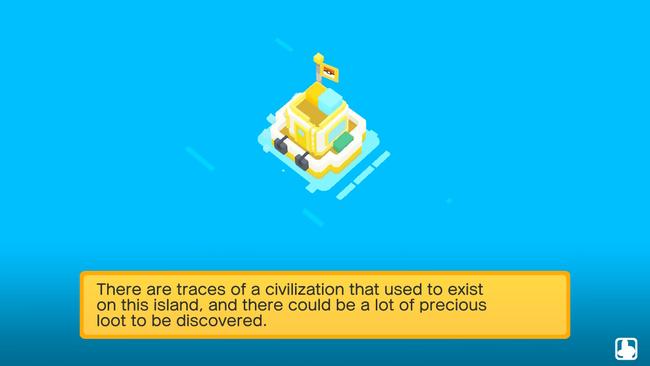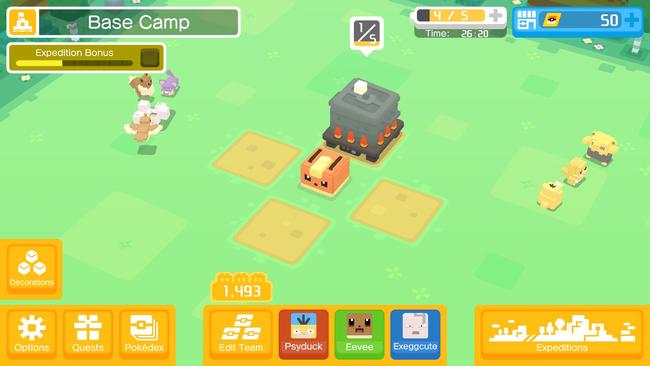
Pokemon Quest (Switch) Impressions
Pokemon Quest has just been released on the Nintendo Switch and will be getting a release on smartphones in later this month. As a ‘free-to-start’ title, people may be worried that Pokemon Quest may be a bit tedious, or turn into a ‘pay-to-win’ experience. Pokemon Quest more or less follows its Pokemon ‘free-to-start’ predecessors, though, which means that it quickly becomes a grind and waiting for stamina to recover… but if you buy the most expensive bundle, it’ll become a much more palatable experience.

In Pokemon Quest, you play as a greedy-seeming character that comes to Tumblecube Island for the purpose of gathering riches. Never leaving the boat, the character controls a MoBee to befriend the Pokemon of the island and look for treasure. You get the choice between not three, but five starters--Bulbasaur, Charmander, Squirtle, Pikachu, and Eevee--and quickly get the chance to set out on expeditions. In expeditions, you take a party of three Pokemon and set out onto the island, beating up any other Pokemon along the way to gather ingredients and Power Stones. Battles are largely automated, with your Pokemon moving on their own and auto-attacking, but you have control of when and which of each Pokemon’s special moves unless you set the battles to be entirely automated.
Honestly, I didn’t see much use in even controlling anything in the expeditions themselves. For most of my playtime, I would set the battles to Auto and walk away from the Switch for a few minutes, coming back to reap the rewards of my team’s hard work. While more difficult battles do benefit from a touch of timing with launching specials and even ordering Pokemon to run away, such battles are not common enough to really worry about for every expedition.
If you’re trying to play completely for free, you’ll notice that the game very quickly ramps up the Power level (combined level of Pokemon and their stats) of the expeditions, and as a result, you’ll be forced to start grinding quickly. I ran into my first wall at the beginning of the second area of the game, and I may have run into that wall earlier if I hadn’t had gotten a Level 10 Psyduck by luck. Additionally, if you fail an expedition, you need to pay tickets (Pokemon Quest’s premium currency) in order to bring back items from the expedition, though it seems the party still gets experience regardless.

But even if you’re ready for the grind, Pokemon Quest makes it feel as though you really shouldn’t bother. When grinding in expeditions that were near equal to my party’s power level, the experience earned was pretty slim, and sometimes I wouldn't even get a level up out of it. While it’s possible to increase the power level using the Power Stones acquired from expeditions, leveling up the Pokemon themselves is how you earn more Power Stone slots, making it difficult to raise your Power Level.
This, of course, assumes that you have good Pokemon in the first place. You do not gain Pokemon from beating them in battle, or attempting the catch them--instead, you cook recipes and attract Pokemon to your camp. What stew is created and what type of Pokemon come by depends solely on the ingredients you put into the pot. In order to get stronger Pokemon, you’ll have to advance the main story forward and get better pots… but they use more ingredients, which will require more grinding. If you want more than one pot going, you’ll have to cough up real-life cash for the other three cooking slots.
The grinding is made even further frustrating by the stamina system. Players are given only five stamina, and it takes a half an hour to restore one. I find that stamina works well enough in mobile games, wherein you can pull out the game while in line or on the train, play a few rounds, and simply move on. It’s a harder sell on something like the Switch though, a system that’s built for longer play sessions. When you dump your five stamina into futilely trying to raise your team’s level and then have to wait for the stamina to slowly recover, you may wonder why you’re even bothering.

Granted, a lot (but not all) of this frustration can be alleviated by shelling out $30 for the Pokemon Quest bundle. The bundle ups your max stamina a few points (but doesn’t completely eliminate it like Pokemon Picross and Pokemon Rumble World), extra cooking pots to attract more Pokemon, double experience, heightened ingredient drops, and even some special Pokemon. You’ll still have to pay in PM Tickets for more Pokemon and Power Stone storage space, but you’ll get some Tickets in the pack and boosts to how many tickets you’ll get daily to make that relatively easy.
My verdict? If you expect to get through Pokemon Quest pain-free without spending a dime, you have the wrong impression about this free-to-start title. But, since you can give it a try for free, go ahead and give it a download if you’re interested. If you try Pokemon Quest out and decide it’s worth paying for, then go for it. Otherwise, stay away, or at the very least, wait for the mobile version.